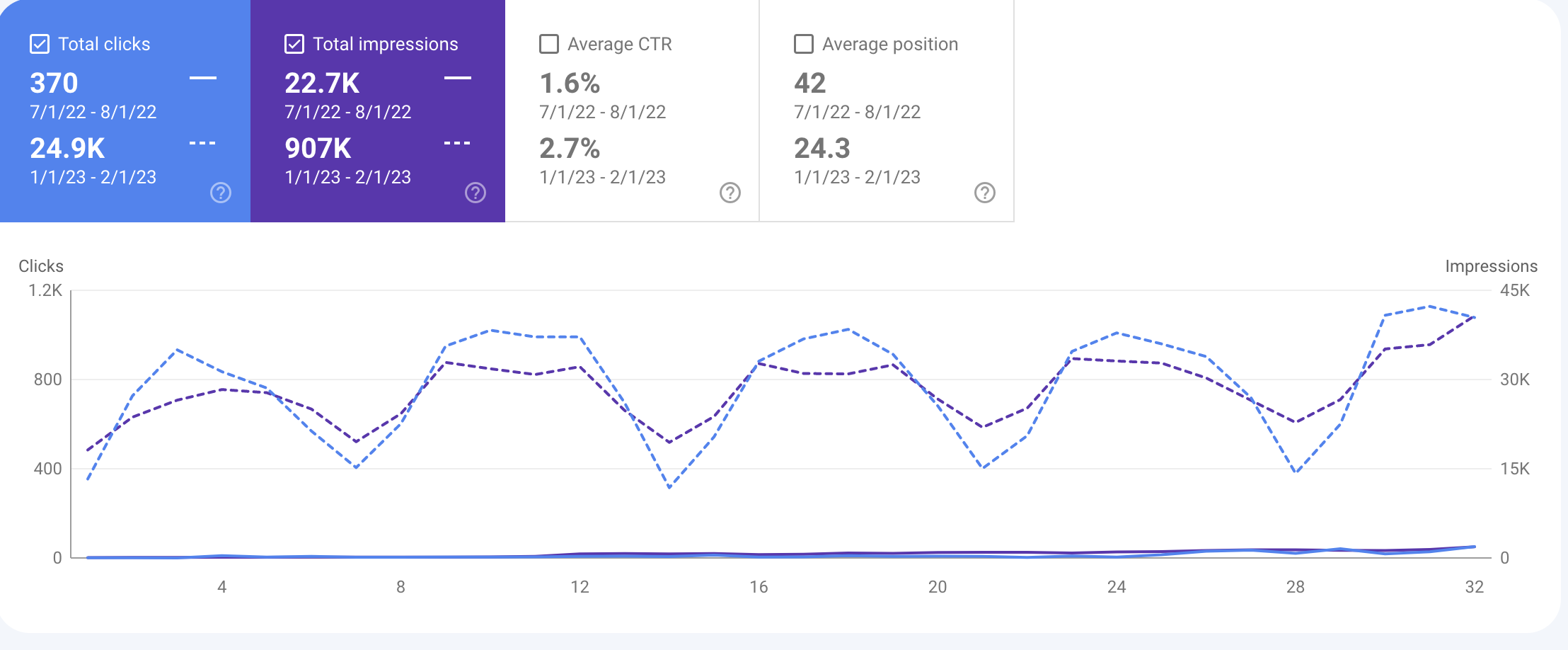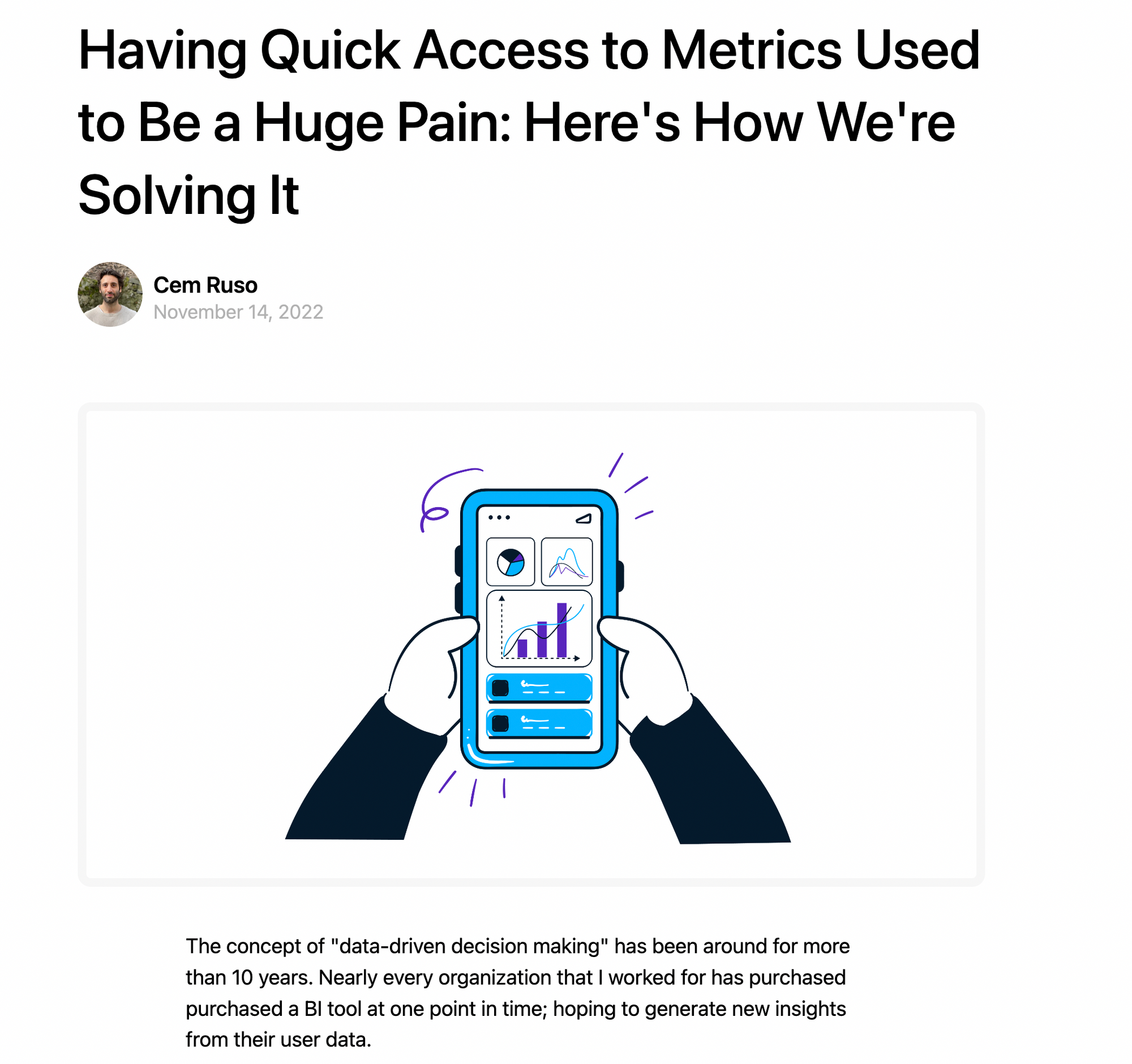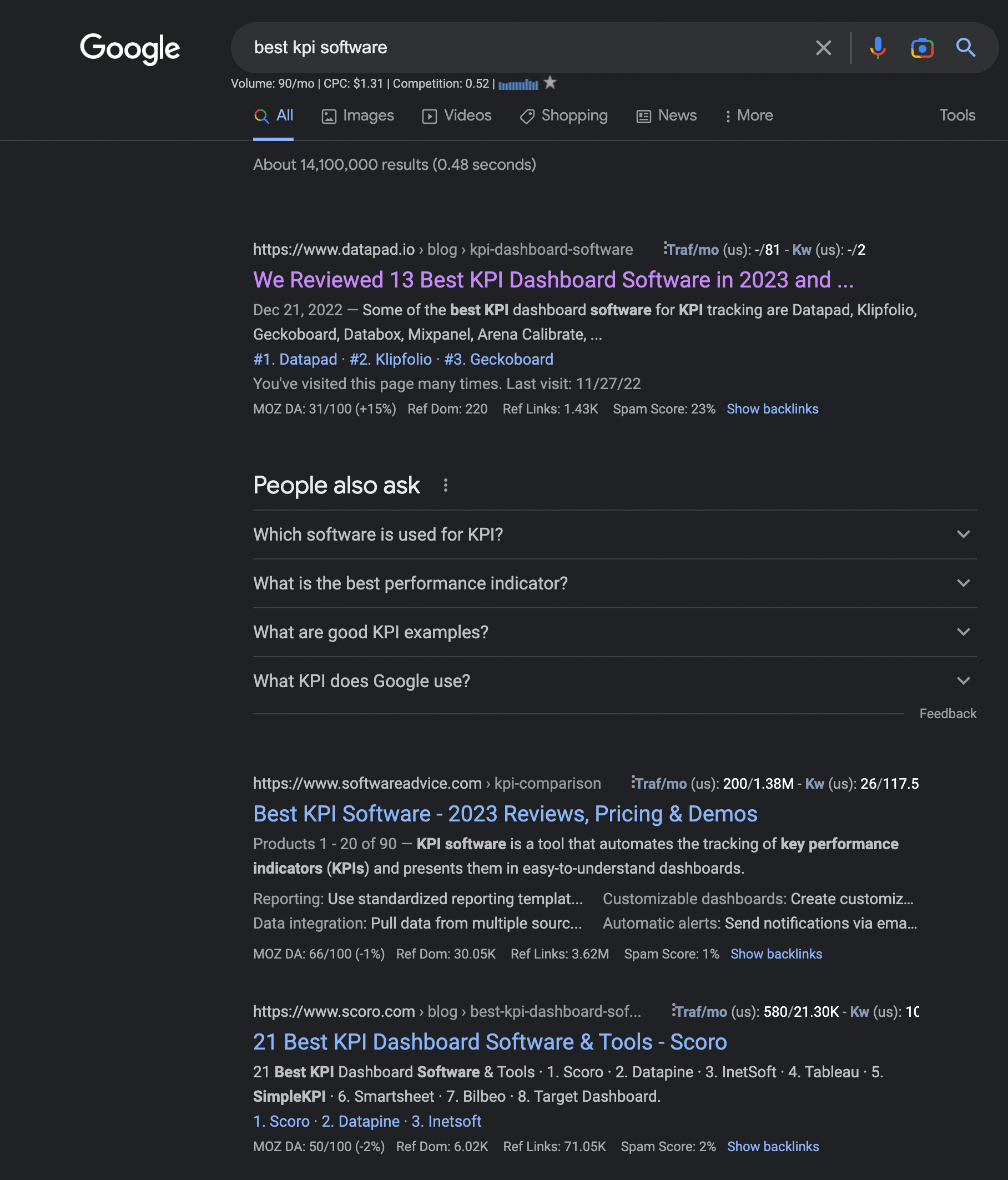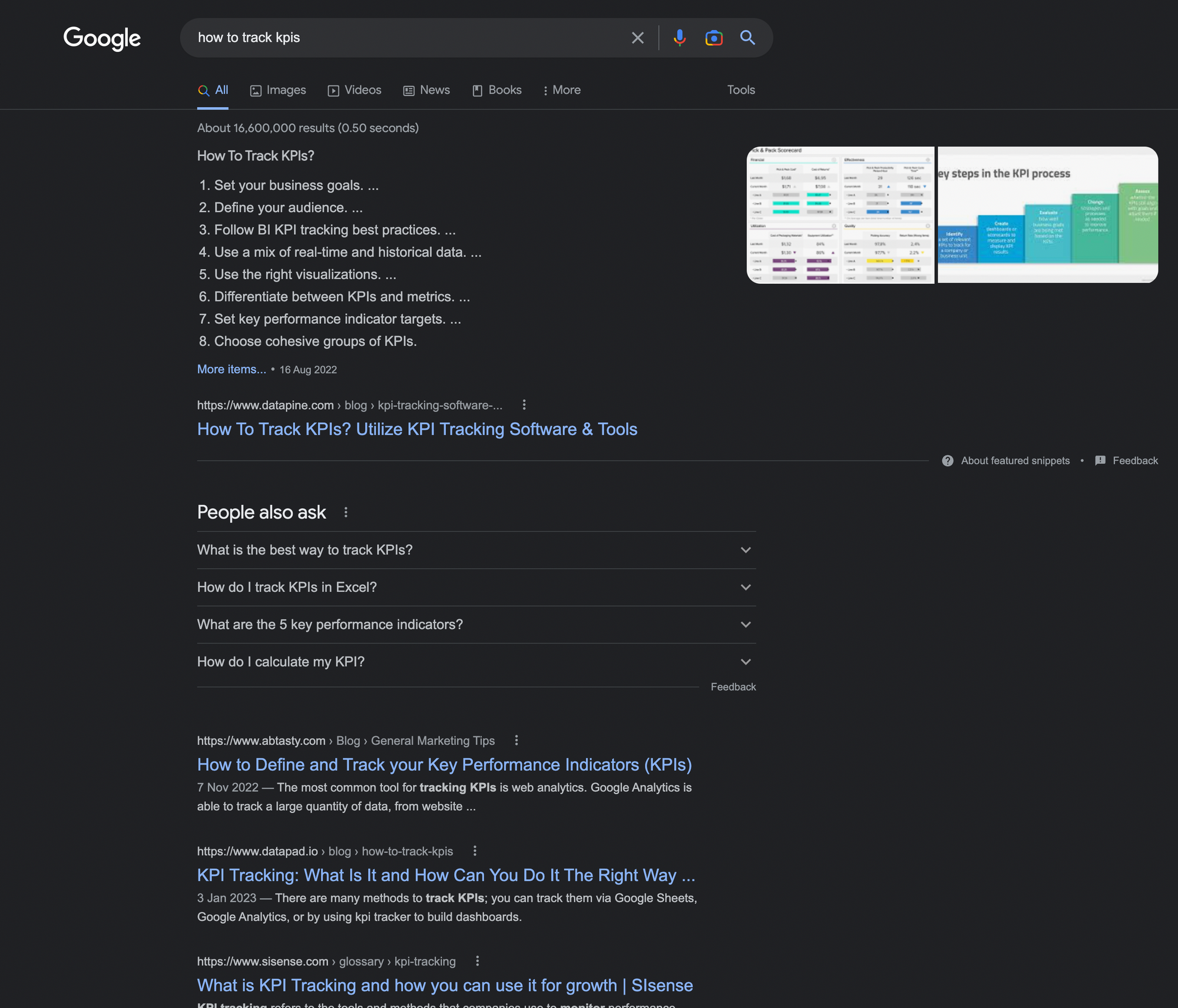
Can you go from 0 to 25k organic traffic per month in six months without link-building despite not having any prior content marketing activity in your domain?
The answer is YES!

🔥 Why Datapad started to do content marketing early?
🔥 How to create ROI focused content strategy
🔥 Should you start content marketing as an early-stage startup?
🔥 How should early-stage startups approach content?
Most founders believe that they should only focus on building products, and then they can start creating demand for them. I disagree with this because what's the point of waiting till you create a perfect product? I scaled a startup before to $1m ARR, and I know that it takes time to build a content engine; the earlier you start better, it is.
I wouldn't say I like scaling a product to $1m with paid channels because I don't believe that you are setting yourself to scale
When I started building the content engine for Datapad, the product was not ready at all. It was far from ready, actually, but we knew what we were making, and we knew who we were building this product.
When I am building a startup, I like to follow Race Car Framework as a Reforge alumni 😊. So I like to focus on building my growth engine (SEO) while using other one-off channels to boost growth.

Source: Lenny's Newsletter
💡
The image above summarizes the Race Car Framework. Thank you, Lenny, for sharing this! Read the full article here.
You might ask why you were focusing on building your engine very early. I will tell you why; Building an engine takes time. I didn't want to put my company in a situation where the product is %100 ready, but there is no engine to drive it. If you want to set yourself to scale, it's better to start early.
I didn't want to do SEO just for the sake of receiving traffic; I did it to reach people who would be interested in signing up and building the product with me.
My approach could be different from many SEOs or marketers out there because I look at content strategy as a business owner, and I want to sign ups 😊
My content strategy was built around identifying topics that my product is solving and building topical authority around it as soon as possible
You can go to any keyword research tool and put a seed keyword there and start creating topics and ideas, or you can talk to your audience and identify topics that would help you convert. If you want more sign-ups, you should pick the latter option, and that's what we did at Datapad.
Here are some of the methods we used:
If you already have competitors, you can visit G2 to understand the following:
If you want to start doing content marketing early and you currently don't have a lot of users that you can tap into for research, I would definitely use G2 to get some topic ideas that would resonate with your target audience.
💡
Pro tip: Here is how to do your G2 research1. Go to G2's website and search for your competitors.2. While checking reviews, pay special attention to the " What problem is the product solving for you?" part3. Take note of all the different reasons why people use your competitor's product4. Now you have a list of high-intent topics to write about 😊
We interviewed our early users with JBTD methodology to identify the topics we needed to write about to cover the whole buyer journey. If you don't have current users, you can also find the users of your competitors and try to have an interview with them.
When you are sourcing content ideas from user interviews, try to focus on; the "problem they are trying to solve," "their current solution," and "desired outcomes." You will get the best topic ideas from those three things I mentioned above
💡
Pro tip: Some of the questions you should ask during your research:1. What is the primary benefit that you have received from (Product or service Name)?2. What is your current solution? What do you like/dislike about it?3. What problem were you trying to solve with our product?
Datapad focused on three main types of content buckets. These were "problem & pain point focused content," "desired outcome focused content," and "solution related content."
If you do your customer research right, you will know the struggles of your persona.

Early on, we identified that our audience was having problems such as; "accessing their metrics quickly," and we created content to call out that problem and introduced our software as a way to solve it.
The post below was one of the first posts we created. Actually, it was not for SEO purposes. We distribute it on social to create some initial traction.

📚
Here is how you can create Pain Point focused content:1. Identify the problems people are trying to solve with your product from your customer research2. Create content ideas based on the problems3. Start creating content using calling out the problem and educating people on how your product is the ultimate solution for them4. Use paid marketing and social to drive eyeballs quickly
Some people know the name of the solution they are looking for, and they exactly search for it, but some people don't know about the solution they are searching for, yet they still want the same outcome as the people who are already searching for a solution.

Let's make it clear with an example.
🥸 We have John, who is looking for a "KPI Dashboard Tool."
🤓 We have Amy looking for a way to track all her KPIs without needing assistance from her data team
Essentially both of these people are looking for a KPI dashboard tool, but they search for it in a different way
John might type something like "best KPI software" and get the result below:

Amy might go to Google and search "how to track KPIs" because she wants to know what is the best way of doing it. Here is what she will get on Google:

By writing content focusing on the desired outcomes of your users, you are getting on the radar of people who are not aware that the solution exists.
💡
**Pro tip:**If you are in a niche that is not mature and there are not many people searching for a tool like yours, then it's best to focus on desired outcome focused content because people might not know the name of the solution but they know what they want to achieve
Some people call this type of content the Bottom of the funnel soma to call it the middle of the funnel.
No matter what you call it, this type of content is for people who know about their problem and they already know that there are tools out there that can help them.

We created a lot of content on:
Best [tool] for [persona]
Best [software] for [use case]
Best [tool] for [platform]
Don't get demotivated by looking at the search volume of solution-based content because these types of keywords usually have a low volume unless you are in a hyper-competitive niche.
There were some times that we created content on a keyword with 0 search volume because we heard that keyword over and over again from our users. Don't shy away from a keyword just because it has 0 or a low search volume.
Most people choose their content strategy based on keywords with high volume and low difficulty. I am not saying that this is bad, it will give you some charts that you can brag about at cocktail parties, but it will not give you customers.
Make sure that you are basing your content strategy around the problems your tool/services are solving for your audience. These topics might not have crazy high volumes, but they will bring leads for you.
You need to create your topical map, do your planning, and start publishing fast. Velocity is very important, especially if you are a new domain and you are not planning to do link building.
If you wait to create the perfect content, you will wait a lot. Instead, publish fast and optimize later; this way, you will be able to reach content velocity, rank faster, and get results faster!
A good content strategy won't start with keyword research. You won't find the golden gems in Ahrefs or Semrush, or any other keyword research tool. You will find the best keyword opportunities for your users. They should tell you how they search to solve their problem, and you need to be present at every step in their buyer journey.
In my experience best converting content is the one that resonates with the pain points of the audience and presents solutions to them. If you don't do your customer research, your content might rank, but it will never resonate with your audience, so your chances of converting become lower.
If you don't have enough resources yet you still want to create content at scale, you should use templatized content that won't require much effort from your end. Try to find content ideas that have a similar structure to each other so that you can create a template and delegate it to a freelancer
For example: If you are a tool that helps people to create charts instantly, you can focus on content such as:
If you are asking why it's because these three keyword ideas I mentioned above have a very similar structure to each other, you can templatize them. You also did your customer research, and you know that most of them were using Google Docs before becoming your customer, so the topic is relevant to you.